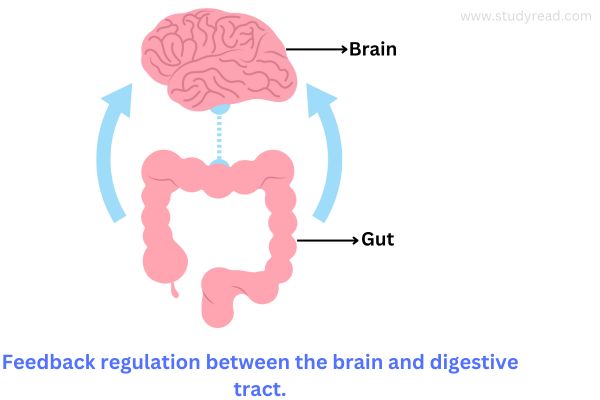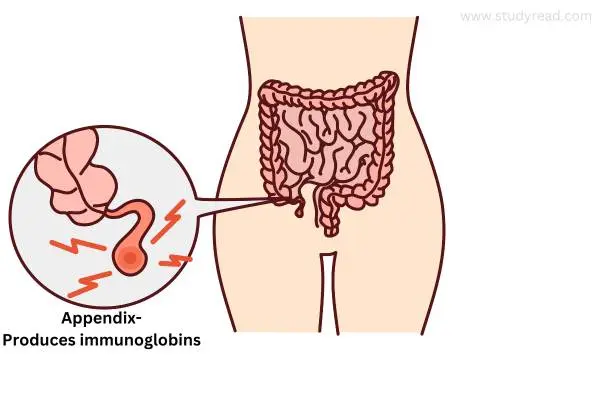The digestive system is the only way solids and liquids should enter the body.
If not, the body would reject and try to show abnormal symptoms.
It is an important organ system that breaks down food into nutrients to fuel the body.
However, its role also extends into other areas beyond digestion. For this, it works intricately with other systems in the body to maintain overall health and functionality.
How does the digestive system interact with other body systems?
The digestive system is linked to almost all body systems directly or indirectly. Below, we will learn them briefly.
Digestive System and the Circulatory System
- The food is broken down into nutrients by the digestive system.
- These nutrients are absorbed into the bloodstream through the microvilli present on the walls of the small intestine.
- The circulatory system transports these nutrients to various cells and tissues across the body.
- This collaboration ensures that every part of the body receives the energy and building blocks it needs to function.
- Besides, the blood in the circulatory system carries a few hormones that regulate the gut or get metabolized in the liver and expelled through the gut.
Key interactions:
- The villi in the small intestine absorb nutrients, which enter the blood via capillaries.
- The liver, a part of the digestive system, works closely with the circulatory system to filter toxins and store glucose as glycogen.
- The gut also expels certain hormones after metabolism.
Read more on Digestive System and Circulatory System Interaction.
Digestive System and the Nervous System

- The nervous system controls the digestive process through signals sent by the brain and spinal cord.
- This connection is facilitated by the enteric nervous system (ENS), often referred to as the “second brain,” which governs gastrointestinal functions independently and in coordination with the central nervous system (CNS).
Key interactions:
- The brain triggers the release of digestive enzymes and stomach acid through the parasympathetic nervous system.
- Stress or anxiety can disrupt digestion, leading to issues like irritable bowel syndrome (IBS).
Digestive System and the Muscular System
- Smooth muscles in the gastrointestinal tract enable food movement through peristalsis.
- Additionally, the muscular system collaborates to protect the digestive organs and support physical activities that impact digestion, such as posture and exercise.
Key interactions:
- Smooth muscle contractions push food along the digestive tract.
- Abdominal muscles assist in protecting and compressing the digestive organs.
Read more on How does the Muscular System Interact with the Digestive system.
Digestive System and the Endocrine System
- The endocrine system regulates digestive processes through the release of hormones.
- For instance, the pancreas releases insulin and glucagon to control blood sugar levels after food intake.
- The stomach secretes ghrelin, a hormone that causes hunger to eat food.
- Similarly, hormones like gastrin and secretin regulate stomach acid production and bile release.
Key interactions:
- The pancreas produces hormones and enzymes critical for digestion.
- Gut hormones influence appetite and energy balance.
Digestive System and the Immune System

A large portion of the immune system resides in the gut.
- The digestive system acts as a barrier to harmful pathogens while promoting the growth of beneficial gut bacteria.
- Specialized immune cells in the gastrointestinal tract help protect the body from infections.
- Appendix and the Peyer’s patch are part of the large and small intestines, respectively, producing immunoglobulins (IgA) essential for gut immunity.
Key interactions:
- Gut-associated lymphoid tissue (GALT) identifies and combats harmful microbes.
- A healthy microbiome supports immune system efficiency.
Digestive System and the Respiratory System
While these systems may seem unrelated, they share a common goal of energy production.
- The oxygen absorbed by the respiratory system is crucial for converting the nutrients the digestive system provides into energy.
- Besides, the diaphragm muscle present below the lungs plays a role in regulating abdominal pressure and aiding digestion.
Key interactions:
- Oxygen from the respiratory system is essential for cellular respiration, which uses carbohydrates and other nutrients from digestion to produce energy.
- The diaphragm facilitates bowel movements and vomiting when necessary.
Digestive System and the Excretory System
- Like the excretory system, the digestive system eliminates waste from the body.
- It specifically expels the solid waste from food through the colon and rectum, and the kidneys filter liquid waste and excess nutrients from the blood, working closely with the liver to detoxify the body.
Key interactions:
- The liver processes toxins, which are then excreted by the kidneys or as bile through the digestive system.
- Fiber from digestion helps expel hormonal waste through the bowels regularly.
- One can experience issues due to an imbalance in hormones when there is an irregular bowel movement.
Digestive System and the Skeletal System
- The skeletal system helps the body move and walk.
- These movements are essential for gut health, digestion, motility, and bloat reduction.
- Further studies have shown that walking and movements stimulate gut microbes and reduce stress hormones by facilitating healthy digestion.
- On the other hand, the digestive system provides the nutrients required for bone health.
- Calcium and vitamin D, absorbed through the digestive tract, are essential for maintaining strong bones.
- Additionally, the skeletal system protects some digestive organs, like shielding the stomach and liver with ribs.
Key interactions:
- The small intestine absorbs calcium and vitamin D, which are crucial for bone density and strength.
- The skeletal structure protects vital digestive organs from physical injury.
- Facilitate active gut moments
Digestive System and the Integumentary System
- The digestive system contributes to skin health by supplying essential nutrients like vitamins A, C, and E, which are vital for maintaining healthy skin, nails, and hair growth.
- Furthermore, the integumentary system helps regulate body temperature, thereby helping the body save energy and reserve food, indirectly minimizing the load on the metabolic and digestive processes.
Key interactions:
- Nutrient absorption supports skin repair, hydration, and elasticity.
- The skin aids in excreting certain toxins through sweat, complementing the digestive system’s detoxification processes.
Summary of Digestive System Interactions with Other Body Systems
| Organs System | Key Interactions with the Digestive System |
|---|---|
| Circulatory System | Transports nutrients from the digestive tract to cells and tissues; the liver filters toxins. |
| Nervous System | Controls digestion processes like enzyme release and peristalsis via the enteric nervous system; mitigates stress impact on the gut. |
| Muscular System | Gut-associated lymphoid tissue (GALT) protects against pathogens; the microbiome supports immunity. |
| Endocrine System | Hormones regulate digestion and blood sugar (e.g., insulin, glucagon). |
| Immune System | Gut-associated lymphoid tissue (GALT) protects against pathogens; the microbiome supports immunity. |
| Respiratory System | It provides oxygen for nutrient metabolism, and the diaphragm assists in bowel movements. |
| Excretory System | Collaborates in waste elimination via the colon and kidneys. |
| Skeletal System | Gets calcium and vitamin D for bone health from the gut; ribs protect digestive organs and also facilitate movement. |
| Integumentary System | Receive nutrients for skin health from the gut; skin aids in detoxification through sweat. |
Conclusion
The digestive system is a cornerstone of human health, constantly collaborating with other systems to sustain life.
Understanding these interactions highlights the importance of maintaining digestive health.
Future posts will delve deeper into these connections, providing a comprehensive view of how the digestive system harmonizes with the body.